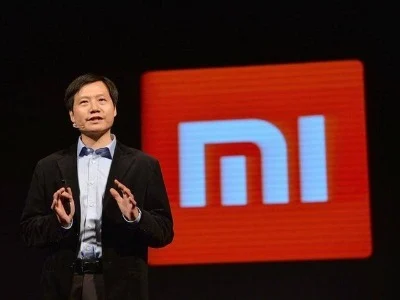Preview | Xiaomi’s Q3 Earnings Report: Automotive Breakthrough, Smartphone Stability at Third Place, IoT Under Short-Term Pressure Yet Growth Momentum Remains Unshaken

$XIAOMI-W (01810.HK)$ The earnings report will be released at Beijing time on November 18. Revenue for Q3 2025 is expected to reach RMB 115.651 billion, representing a year-on-year increase of 25.02%; the estimated earnings per share is RMB 0.345, reflecting a year-on-year increase of 64.48%.
The accounting standards used for the above data are International Financial Reporting Standards (IFRS).
The current capital market assessment: The core driver supporting this growth stems from the breakthrough performance in the smart electric vehicle business, combined with the solid foundation of Internet of Things and internet services. Even though the smartphone business faces short-term fluctuations, the overall profitability elasticity of the group remains evident.
Smart Electric Vehicles: Break-even Achieved, Deliveries Continue to Climb
The third quarter will mark a ‘milestone moment’ for Xiaomi Group’s automotive business. Benefiting from the stable deliveries of the SU7 and Ultra models, quarterly deliveries are projected to reach 109,000 units. Despite capacity constraints caused by SU7 orders, gross margin is expected to slightly decline to 25.8% quarter-on-quarter (from 26.4% in Q2). However, driven by purchase tax subsidies, economies of scale, and improved production efficiency, the business is anticipated to achieve break-even earlier than the market’s previous expectations by one quarter.
More notably, there is significant improvement in the synergy between production capacity and order inflows. Production reached 45,564 units in September, marking a 22% month-on-month increase, which directly propelled October deliveries to surpass 46,000 units, with a 10% month-on-month rise. Notably, deliveries in the last two weeks of October consecutively exceeded 10,000 units, clearly demonstrating accelerating production ramp-up. The policy introduced on October 24, offering full purchase tax subsidies for orders placed before November 30, achieved remarkable results, with weekly orders surging 50% month-on-month to 6,000 units, driving total new orders for the month to 23,500 units, of which the YU7 SUV accounted for over 57%, emerging as a new sales pillar.
Smartphones: Maintaining Third Place Globally, High-End Momentum Builds for Q4
In Q3, Xiaomi Group shipped 43.5 million smartphones, securing a 13.6% global market share and maintaining its position as the world’s third-largest smartphone vendor, with a year-on-year increase of 1.8%. This achievement was primarily driven by mid-to-low-end models in Europe and Latin America, where the Redmi Note series and Poco series became the main contributors to overseas sales. However, internal disparities within the business are evident: an increased proportion of low average selling price (ASP) markets such as India and Africa, coupled with declining shipments in China, led to a slight quarter-on-quarter decrease in ASP. Rising memory costs also posed challenges to profitability. Nevertheless, thanks to strong supply chain management, gross margin is expected to remain robust at 11%.
The growth momentum for the fourth quarter has already emerged ahead of schedule. Xiaomi’s 17Pro/ProMax models sold over one million units within five days of their release, successfully entering the premium market segment above 6,000 yuan. With the increase in their sales share, combined with the impact of the Double Eleven promotion and the advancement of its new retail strategy, shipments are expected to grow at a faster pace. CMB International forecasts that total shipments for 2025 will reach 174 million units, representing a year-on-year increase of 3%, with the growth rate potentially expanding further to 7% in 2026.
IoT and Internet Services: The former faces short-term pressures, while the latter remains a stable profit anchor.
These two businesses exhibit a ‘one steady, one slowing’ pattern. The internet services business continues to show stable growth, with third-quarter revenue projected to increase by 8% year-on-year. Gross margins remain consistently high at 75%, supported by the monetization potential of 800 million global monthly active users. In particular, the proportion of advertising revenue from AIoT devices continues to rise, becoming a new growth driver.
The IoT business, however, faces short-term challenges due to intensified market competition and reduced domestic subsidies. Third-quarter revenue is expected to grow by 5% year-on-year but decline by 29% quarter-on-quarter. Institutions such as Haitong International have even revised downward the revenue forecast for this segment from 30.9 billion yuan to 26.6 billion yuan. Nevertheless, in the long term, Xiaomi’s AIoT ecosystem advantages continue to strengthen, with device connections reaching 500 million in the first half of the year and a cross-purchase rate within the ecosystem at 35%. As the premium strategy progresses (with high-end products accounting for 20% of the mix), future growth drivers remain promising.
Outlook and Valuation: Annual vehicle sales target set at 410,000 units.
The growth trajectory of the automotive business has become increasingly clear. Institutions predict deliveries in November and December will reach 48,000 and 50,000 units respectively, with total fourth-quarter deliveries expected to hit 144,000 units, representing a 32% quarter-on-quarter increase. Combined with deliveries from the first three quarters, full-year EV shipments for 2025 are projected to increase from 402,000 units to 410,000 units, doubling year-on-year. Under scale effects, gross margins are also expected to improve continuously, rising to an estimated 27.4% in the fourth quarter. On the product side, robust preparations are evident, with market rumors suggesting the launch of a PHEV model in 2026 to cover more niche markets.
The key insight from Xiaomi’s Q3 earnings report lies in its transition from ‘Smartphone + AIoT’ to a new phase characterized by the synergy of ‘three pillars.’ The early achievement of breakeven in the automotive business demonstrates the realization of the ‘ecosystem empowering manufacturing’ logic, rather than mere sales growth.
Fluctuations across segments actually reflect strategic accumulation: short-term pressure on smartphones paves the way for premiumization, the sequential decline in IoT reflects a healthy adjustment following subsidy reductions, and internet services continue to solidify profitability foundations.
The breakthrough in automobiles does not represent the addition of a new business line but rather Xiaomi’s decade-long ecosystem integration that has closed the value loop between people, vehicles, and homes. This is precisely why Xiaomi’s valuation uplift marks the shift from consumer electronics to a technology ecosystem upgrade.
Observing option signals, the put/call ratio has risen sharply, with trading volume increasing slightly.
Observing option signals, options predict a volatility range of ±4.24% following this earnings report.
Fellow investors
Are you optimistic about Xiaomi’s Q3 performance?
Welcome to join in predicting the rise or fall of Xiaomi’s stock price!
Will it surge by more than 5%, show normal performance (between -5% and 5%), or drop by over 5%?
Upgraded performance insights deliver a competitive edge in seizing opportunities!Come and experience it now >>
Editor/Lee





